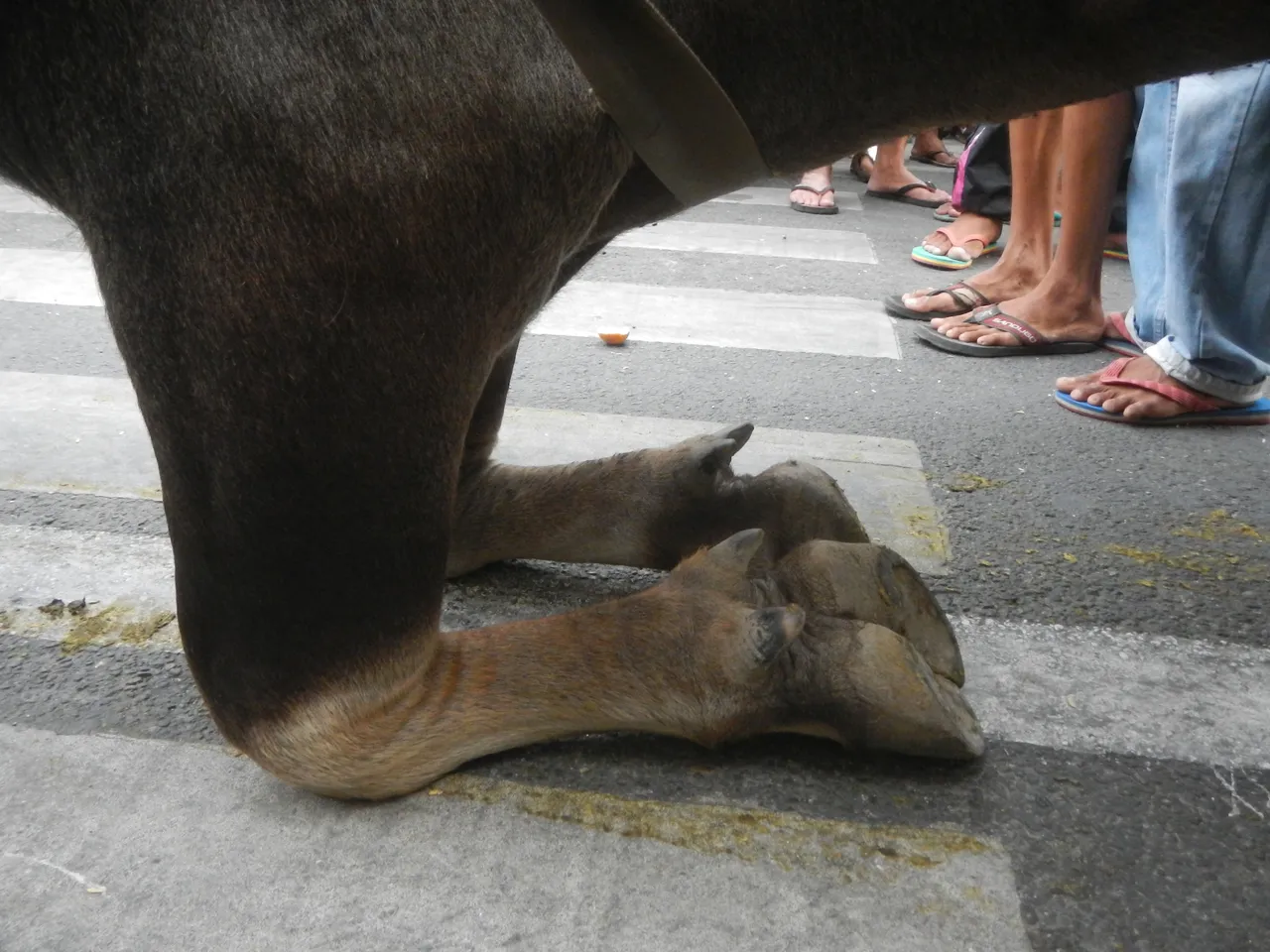Friends, imagine with me for a moment that you have a cattle on your farm who is lame, I am, sure you are going to be so worried about where it came from, and how you can help that particular animal survive. Anyways, it is always not funny whenever a farmer finds his farm animal sick, but certainly, l am sure that, learning about these illnesses and knowing what causes them exactly will improve our knowledge in such field.
There are several bacteria present in the environment that could cause the infection known as ''bovine feet''. Speaking of Foot rot, it is characterized by a severe inflammation of the skin, adjacent to the soft tissues of the space between the digits, also accompanied by lameness, swelling, a deven in most cases a very terrible smell oozing out of the necrotic lesion of the interdigital skin.

Image source
When a cattle has an injury that could be caused by a sharp object; either stone, metal, wood, or thorns, it creates an opportunity for infectious agents to get through the skin. Aside from the injury, we also have cases of damage to the interdigital skin.
The first way to identify an infected animal is through lameness, coming from a rarely noticeable and very rare point to the point of becoming so severe that it affects more than one foot. After lameness, we begin to notice the reddening of the interdigital tissue and the swelling of the foot, which spreads even to the toes. More than one foot may be affected simultaneously, and the loss of appetite may also be recognized.
Bear in mind however, that other foot conditions in cattle may be confused with foot rot, some of them are; fractures, sole abrasions, sole ulcers, interdigital dermatitis, and the infection or inflammation of tendons, although they all affect a single claw while foot rot affects both claws, there is still a need for appropriate diagnosis to help figure out exactly what the issue could be. Diagnosis is done through examination of the foot, observation of increased body temperature, separation of the interdigital skin, and course the interdigital swelling.
Treating foot rot usually comes out to be a successful procedure especially when administered at an early stage, treatment should begin with cleaning and appropriate examination of the foot, just to be sure that the lameness is actually due to foot rot. In some mild cases, there will be a positive response to tropical therapy and supportive care, on the other hand, there are cases that require the use of systemic antimicrobial therapy.
Animals that are affected should be retained in dry areas until they are completely healed, The healing process should take about 3-4 days, but if it doesn't happen, it means the infection has probably invaded a deeper tissue. When infection does not respond to initial treatment, it only means you need to alert your vet as there is a need for a re-evaluation on time. When the case has become a highly severe one; slaughtering the animal, amputation of the claw, etc. may likely be the next option.
While we cannot be careful enough sometimes, there are simple procedures to go about in the prevention of foot rot. Preventing its occurrence involves several management practices;
Footbaths: When a footbath is done correctly, it helps prevent bacterial infections in the hoof, as well as helps maintain healthy skin.
Dry environments: Having your animal grow and live in a dry and clean environment will reduce the possibility of a bacterial infection.
Constant hoof trimming: Regular and constant hoof trimming will help in the maintenance of an appropriate hoof shape, it will also prevent every accumulation of manure and dirt in the hoof. Hoof trimming also prevents the development of other look-alike foot rot infections in an animal.
Appropriate nutrition: Having a healthy immune system will help reduce every possibility of infection.
Isolating the infected animal: When an infected animal is identified and isolated on time, it will prevent the spread of the infection to other animals.
Pain management: Some medications will help relieve every form of discomfort and pain linked with foot rot, which of course will be administered by the vet if informed on time.
Just as in other infections and diseases, it is better to diagnose them on time, and inform specialists to have a look, that is the best way to salvage the situation as well as save the life of your precious pet.